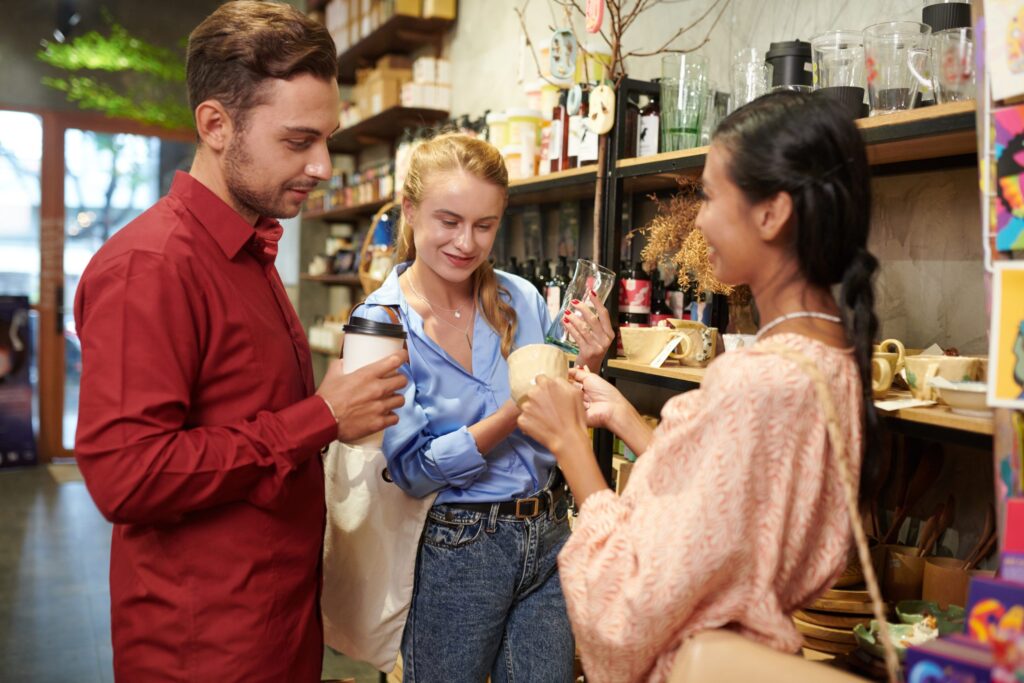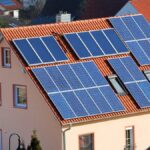Retailers thrive when they understand the customer’s behaviour. No matter what size boutique or a massive mall, knowing how many people come into a store, the places they go to, and how long they stay there will provide helpful information. This is where the counter for footfall can help.
A counter for footfall helps businesses track the number of people who visit their establishment and allows them to make data-driven choices to boost sales and enhance the customer experience. By studying patterns in footfall, businesses can alter their strategies to improve store layouts, staffing and marketing campaigns.
In this post, we’ll examine the ways that tracking foot traffic can improve business results and explain why every retail shop should consider using this technology.
Understanding a Footfall Counter
The footfall counter gauges the number of people who enter or pass through a specific region. Retailers can use this information to better understand customers’ habits, analyze their performance, and increase the efficiency of their operations.
Types of Footfall Counters
Various types of footfall counters have different ways of collecting data:
- Infrared sensors count individuals using heat signatures when they move through entry points.
- Counters based on cameras: Use video analytics to monitor movement and collect specific visitor information.
- WiFi and Bluetooth Counters: Find mobile phones nearby to estimate the amount of foot circulation.
- AI-powered Systems: Combine multiple technologies to analyze customer movement with greater accuracy.
Each has advantages according to store size, layout, and objectives.
How Footfall Counters Improve Sales Performance
Understanding a store’s foot traffic can help them develop their strategies for selling. Here’s how:
1. Identifying Peak Hours
By analyzing daily visitors, businesses can pinpoint the times when their stores are busiest. This information aids in staffing their stores and ensures that customers get the best service during peak traffic hours.
2. Evaluating Marketing Success
Retailers frequently invest in promotions, But how do they evaluate their effectiveness? By comparing footfall before and after the promotion, determining the marketing strategies that attract more customers, and then adjusting their plan to align with the results.
3. Optimizing products that track visitor movement can strategically place in-demand products in specific locations. If certain areas receive lower foot traffic, companies could alter their layouts to boost customer flow to those areas.
4. Improving Conversion Rates
Not every visitor can make a purchase. By comparing the data on foot traffic with sales data, retailers can find areas of weakness and implement strategies to convert more people into buyers, whether through improved merchandise displays, discounts, or personalized service. Personalized customer Experience with Footfall Data
An enjoyable shopping experience will encourage more frequent visits and word-of-mouth recommendations.
This is how foot traffic data can impact the satisfaction of customers:
1. Better Store Layouts
A chaotic or confusing store layout could frustrate customers. Analyzing foot traffic helps designers design spaces that are easy for customers to navigate and ensure that customers can get what they want quickly.
2. Reducing Checkout Queues
Long checkout lines can turn off prospective buyers. If you can identify peak shopping hours, businesses can alter staffing levels to handle queues effectively, resulting in an easier shopping experience.
3. Personalized Shopping
Knowing how customers move through the store allows retailers to create more personalized experiences. If personalized information indicates that a large percentage of customers are spending time in a specific section, the retailer can enhance the area with more appealing lighting, displays, and customer service.
4. Improving Customer Service
Data on footfall can help businesses distribute personnel efficiently. In order to ensure that employees are in areas with high traffic and retailers are able to provide immediate assistance, which results in enhanced and personalized shopping personalized
Using Footfall Counters for Better Decision-Making
Retailers face a myriad of decisions every day regarding everything from store hours to promotions. Data on foot traffic is an excellent foundation for these decisions.
1. Inventory Management
Knowing the days and times that attract the most people, retailers can plan the amount of available stock. This helps avoid overstocking or running out of popular items during peak times.
2. Identifying Underperforming Areas
Some areas of a store might not receive customers’ attention. If they recognize the pattern-recognized areas, companies can redesign them by installing improved lighting, signage, or other promotional materials.
3. Comparing Multiple Locations
For companies with more than one location, information on footfall can be used to compare performance. If one store is receiving significantly fewer visitors, the owners can investigate the cause and then make adjustments to attract more customers.
4. Adjusting Store Hours
If the data show that a particular store has fewer people during specific times, the store can alter its hours of opening and closing to accommodate customer preferences, which can reduce operational expenses while increasing sales opportunities.
Implementing a Footfall Counter in Your Store
If you’re considering the footfall count, below are a few essential steps to make sure you select the best one for your needs:
1. Define Your Goals
Are you seeking to track high-traffic hours, analyze the effectiveness of your marketing campaigns, or even improve the layout of your store? Knowing your goals will assist you in deciding on the best technology.
2. Consider Accuracy and Features
Different counters have different degrees of accuracy and features. A smaller store might benefit from an infrared counter, whereas a bigger retailer might require an AI-powered machine with precise analysis.
3. Ensure Easy Integration
To maximize the benefits, the fall counter should be integrated with other business tools, including reports on sales, inventory management, and staffing schedules.
4. Overcoming Challenges
Certain retailers are concerned about privacy concerns or difficulties with installation. Choosing a system that is compliant with privacy laws and offers an easy-to-set-up process can help address these issues efficiently.
Conclusion
A footfall counter can provide useful information to help retailers make educated choices. By analyzing trends, companies can enhance customer experiences and streamline operations. Whether adjusting store layouts and staffing levels or evaluating marketing strategies, data on foot traffic is vital to increasing sales.
Retail success depends on more than great products. It involves understanding customer behaviour and improving the customer experience. An effective foot traffic analysis program can be key to sustaining business expansion.
FAQs
Q1. How reliable are counters for footfall when measuring the number of customers who visit?
The accuracy is dependent on the technology utilized. AI-powered cameras typically provide high precision, whereas Wi-Fi-based counters could have slight variations because of interference with signals.
Q2. Are small retailers able to benefit from counter for footfall?
Even smaller stores can benefit from insights into the number of customers who visit, peak hours, and layout efficiency, which can assist them in improving their sales and operations strategies.
Q3. What’s the cost of installing the footfall counter?
Costs vary based on features, technology, and store size. Basic infrared counters are affordable, whereas advanced AI-based systems with precise analysis may require more investment.
Q4. What can a counter for footfall assist in promoting your marketing campaign?
Retailers can track foot traffic before and following marketing campaigns to assess their effectiveness. If a marketing campaign increases visitors, that is a sign that the outreach was successful and has resulted in engagement.
Q5. Does a counter for footfalls infringe on the privacy of a customer?
The majority of footfall counters don’t gather personal information but rather monitor movement patterns. Camera-based systems can employ anonymized data to comply with privacy laws.






